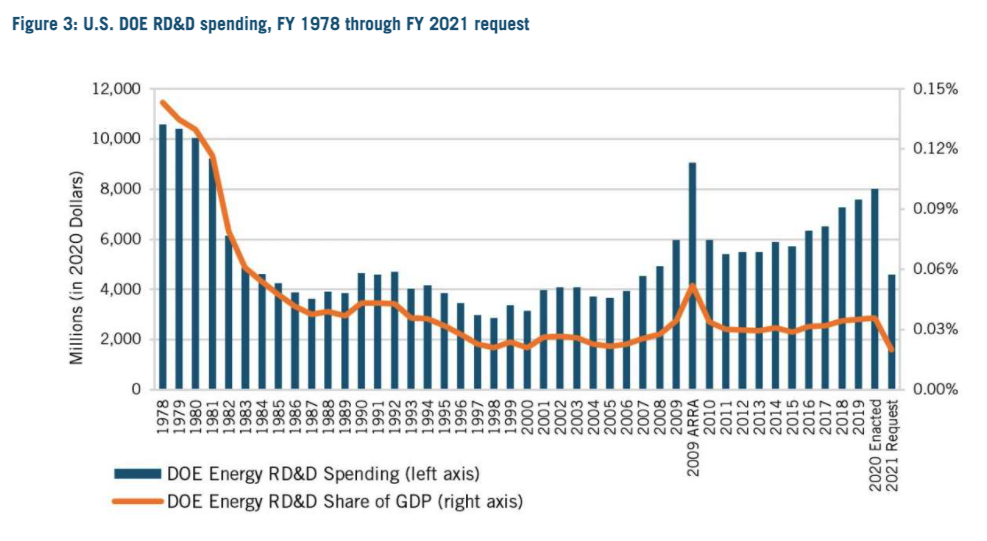Loud Climate Policy
COMMENTARY | The Ecomodernist

Let me set the stage: There’s a Democratic majority in both houses of Congress and a Democrat in the White House. Climate advocates have spent the last few years in the exile of a Republican Administration, one quarter drawing more and more attention to hurricanes and other impacts of climate change, while another quarter crafts a legislative agenda to push bold, decisive climate policy, and now they have their chance. It’s what some have called the “last, best chance” to deal with climate change.
So we have this expansive, ambitious policy program being debated in Congress. Advocates say it will put the US energy economy on a path toward emissions stabilization by later this century. But it’s complicated. Because of the byzantine intricacies of federal legislative policymaking, the program being debated is nothing like the policies drawn up in the abstract by environmental economists and academics. Climate hawks claim it’s absolutely essential, but moderates are worried about the costs. The general public, while supportive of climate action in general, is not exactly fired up. Many caution that if passed, it would accelerate emissions reductions in the United States, but not all that much faster than would be expected under business as usual.
I am of course referring to the Waxman-Markey cap-and-trade legislation that died in Congress in 2009.
Now, here we are all over again. With the reconciliation fight and the Clean Electricity Performance Program (CEPP) at center stage, we have returned, for the first time in more than a decade, to a serious attempt at “loud” climate policy. If “quiet climate policy,” as The Well News covered earlier this year, is low-drama, behind-the-scenes, and depolarizing, then loud climate policy is, well, the opposite. Loud policies might very well be necessary to reduce emissions and adapt to climate risks, at least at the speed and scope to which our political leaders have committed. But loudness comes with its own risks.
We all know what happened after the failure of the Waxman-Markey cap-and-trade bill. Democrats and climate hawks regrouped, seeding, variously, popular movements against pipelines and fossil energy investment; efforts to squeeze the fossil fuel industry through executive branch regulation and lawsuits; and the crafting of new, expansive legislation to advance when the opportunity presented itself. We are of course in such a moment now, as we all watch the negotiations around the infrastructure and reconciliation packages and the clean energy subsidies and investments included in them.
Now, I don’t mean to suggest that reconciliation and CEPP are merely history repeating themselves. There are several important differences. CEPP is pretty popular, more so than an explicit price on carbon, according to polling released recently by Data for Progress. That’s arguably at least partially down to the fact that it uses a carrots-not-sticks approach, while also focusing on investing more in assets — clean energy generation — than on penalizing fossil fuels, though of course it actively does both. And it at least gestures at, as the new coinage goes, “popularist” politics, attached as it is to a broad assemblage of ostensibly popular stuff. In that sense, this new attempt at sweeping climate policy reform is measurably quieter than Waxman-Markey or a Green New Deal or even the Obama Administration’s Clean Power Plan.
But if CEPP is arguably quieter than some of its comps, it is large in absolute terms, submerging but not exactly optimizing for price tag; it is highly partisan, begging repeal by future Republican officeholders much more than the quieter popular spending on science and R&D tend to do; and it is bespoke, building not on existing and popular investment and infrastructure programs but rather creating a large and convoluted new bureaucracy of payments and penalties.
So it’s worth reflecting on the progress we made over the last decade even without a big, loud climate policy in place.
Emissions in the United States are lower today than they were projected to be under Waxman-Markey, mostly thanks to cheaper natural gas and the growth hit of the Great Recession but also thanks to wind and to a lesser extent solar. Clean energy technologies, especially solar, wind, and lithium-ion batteries, have dropped in price precipitously. A number of states have instituted and expanded renewable portfolio standards, often extending them to include low-carbon sources like nuclear and carbon capture and sequestration. Congress has created new innovation programs like the Gateway for Accelerated Innovation in Nuclear and the Section 45Q tax credit for carbon removal. Federal clean energy R&D increased more than 20% during the Trump Administration. Quiet climate policy indeed.

Source: Innovation and Information Technology Foundation (March 2020)
I find observing this is often perceived as a bit nihilistic, but none of this could have happened without policies. They just tend not to be the types of policies that occupy most of our politics.
Whether or not the Clean Electricity Performance Program becomes law, this reconciliation bill is not the “last, best” chance to deal with climate change. Doing so will require further and deeper investments in new and existing technologies. It will require, one way or another, the participation of Republicans and negotiation with conservative principles. It will require, as always, reckoning with the truly global nature of the climate challenge, both the disparate impacts on different regions and the opportunities and challenges presented by collaboration with China and other nations.
Confronting climate change will occasionally navigate us toward loud political moments like the one we find ourselves in today. But almost regardless of the outcome, we should be prepared to return together to the more prosaic, quieter policy arenas that will necessarily launch a substantial portion of US and global climate action in the years and decades to come.
Alex Trembath is the Deputy Director at the Breakthrough Institute, a global research center based in Berkeley, California focused on identifying and promoting technological solutions to environmental and human development challenges. He is the lead or coauthor of several Breakthrough publications, including Saying the Quiet Part Out Loud, Beyond Boom and Bust and Our High-Energy Planet. Follow Alex on Twitter @atrembath.
This column was adapted from remarks by Alex Trembath at the Breakthrough Institute’s recent Ecomodernism 2021 conference October 3-5.























